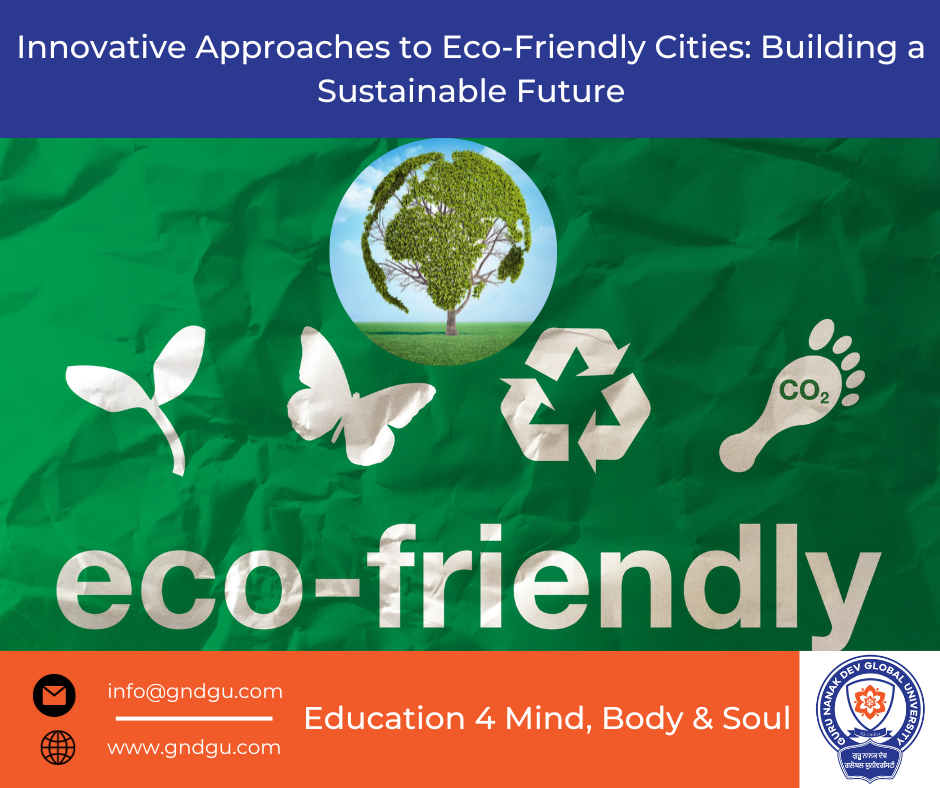Your cart is currently empty!
Innovative Approaches to Eco-Friendly Cities: Building a Sustainable Future

In an era marked by rapid urbanization and growing environmental concerns, the concept of eco-friendly cities is gaining momentum. With innovative approaches, technology-driven solutions, and inspiration from around the globe, cities are now at the forefront of the sustainability revolution. In this technical blog, we’ll explore three key pillars of this movement: Green Building Practices, Case Studies of Eco-Friendly Cities, and the pivotal Role of Technology in Sustainability.
Green Building Practices
Green buildings are the cornerstones of eco-friendly urban development. They are designed with a holistic approach that minimizes their environmental impact throughout their entire lifecycle. Here’s a look at some pioneering green building practices:
- Energy Efficiency: Green buildings employ advanced energy-efficient designs and technologies. Features like LED lighting, smart thermostats, and efficient insulation reduce energy consumption significantly.
- Renewable Materials: Sustainable construction materials, such as bamboo, reclaimed wood, and recycled steel, are increasingly being used. These materials reduce the carbon footprint of construction.
- Passive Design: Smart architectural choices like natural ventilation, strategic window placement, and shading systems help regulate indoor temperatures without excessive reliance on heating or cooling systems.
- Green Roofs and Walls: Vegetated roofs and walls not only enhance a building’s aesthetics but also provide insulation and reduce heat island effects, contributing to energy savings.
- Waste Reduction: Construction waste is minimized through practices like recycling and reusing materials. Some buildings even incorporate waste-reducing technologies.
Case Studies of Eco-Friendly Cities Around the World
Inspiration is often found in real-world success stories. Let’s take a virtual tour of some remarkable eco-friendly cities that are leading the way in sustainability:
1. Copenhagen, Denmark: This city is famous for its commitment to cycling, with extensive bike lanes and bike-sharing programs. It’s also a pioneer in renewable energy, with ambitious goals for carbon neutrality.
2. Singapore: Despite its limited space, Singapore boasts impressive green architecture, including vertical gardens and energy-efficient buildings. Its comprehensive public transportation system reduces reliance on cars.
3. Portland, Oregon, USA: Portland is known for urban planning that emphasizes green spaces, public transit, and sustainable architecture. It’s a prime example of how cities can integrate nature into their design.
4. Curitiba, Brazil: Curitiba’s innovative public transportation system is a model for efficiency. It’s a city where sustainability and urban planning go hand in hand.
Emphasizing the Role of Technology in Sustainability
Technology plays a pivotal role in transforming cities into eco-friendly hubs:
- Smart Grids: These intelligent energy distribution systems optimize electricity usage, reduce waste, and integrate renewable energy sources seamlessly.
- IoT in Urban Planning: The Internet of Things (IoT) allows cities to gather real-time data on everything from traffic patterns to air quality, enabling informed decisions for resource management.
- Data-Driven Decision Making: Advanced data analytics help cities identify areas for improvement in terms of sustainability. This information guides policy and infrastructure development.
- Green Tech Innovations: Technologies like solar roadways, wind-powered streetlights, and water-saving sensors are being incorporated into urban infrastructure to reduce environmental impact.
As we explore these innovative approaches and technologies, it’s clear that building eco-friendly cities is not just a noble goal; it’s a practical necessity. With the global population continuing to shift towards urban living, cities must adapt and transform to ensure a sustainable future for all. The examples set by green buildings, eco-friendly cities, and technology-driven solutions are guiding the way forward. By implementing these strategies and learning from successful models, we can pave the road to a more sustainable urban future, one building, one city, and one technological innovation at a time.